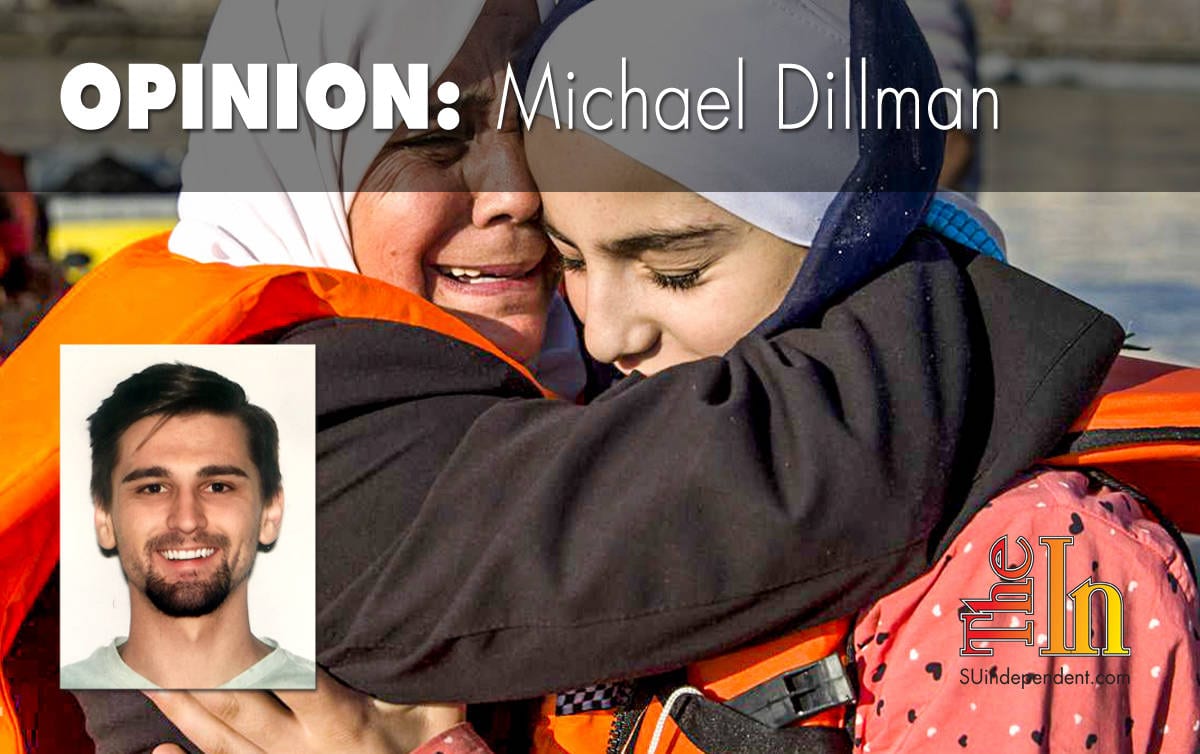
In the spring of 1939, a transatlantic liner called the “St. Louis” sailed from Germany and headed for Cuba. The ship had 937 passengers, almost all of whom were Jews fleeing from a political regime in Germany that put them and their children in grave danger.
When the “St. Louis” arrived in the Havana harbor later that spring, the Cuban government admitted just 28 of the passengers because they were the only souls on board that had valid passports. The other 900 passengers were on a waiting list to receive official U.S. visas, but waiting in Germany for the process to be completed, which sometimes took years, just wasn’t an option. The Cuban government refused to allow them onto Cuban soil. During the journey, they had sailed so close to Florida that they could see the lights of Miami in the distance.
Horrified at the prospect of being forced to return to Germany, passengers on the “St. Louis” cabled President Franklin D. Roosevelt begging for refuge. Roosevelt ignored the plea for solace and never even gave them a response. Roosevelt was not alone, either. Just months before the “St. Louis” headed for Cuba, both houses of Congress shot down a bill that would have admitted 20,000 Jewish children from Germany.
Two other ships carrying a combined 200 Jewish refugees sailed to Cuba in May that year and were also neglected by the U.S government. The American public supported these decisions and, out of pure knee-jerk reaction, was complicit in creating this permanent stain on American history.
Just three years later, Franklin Delano Roosevelt issued Executive Order 9066, the infamous order that that authorized the internment of 110,000 of our own Japanese Americans. When the order was issued, the country was still in shock over a senseless attack. Despite the fact that almost two-thirds of internees were United States citizens, Americans spewed out repugnant racial stereotypes, and American institutions published dehumanizing propaganda pieces that depicted Japanese peoples as senseless barbarians. Most internees lost not only their businesses and possessions but also their homes when they were imprisoned. Once again, the American electorate aided the government in fostering and producing one of the nastiest stains on American history.
The nativity scene depicts a Middle Eastern family looking for a place to stay. Undeniably, Jesus and his parents were refugees from the Middle East. Matthew tells us that after Jesus’s birth, Mary and Joseph fled their home in search of solace with their infant to Egypt as refugees fleeing from a violent tyrant.
The irony of Christians rejecting refugees as they put up the decorations celebrating Christ’s birth is hard to miss.
Terrorists’ most valuable and powerful asset is, well, terror, and with the xenophobic rhetoric that‘s being used to deny refuge to desperate children, I’d wager that the terrorists have already won. They have taken lives, yes; are we going to let them take our humanity? If we do, the “War on Terror” will be over. And we will not be the victors.
“I cannot think of a more potent recruitment tool for [the Islamic State] than some of the rhetoric that’s been coming out of here during the course of this debate,” said Barack Obama.
Typically, solitary terrorist attacks are not incredibly deadly; it is the way in which states violently react to them that creates the most significant damage. The Sept. 11, 2001 attacks killed nearly 3,000 people. This was a devastating tragedy, but we must acknowledge that by far the most noteworthy damage was inflicted well after life went back to normal in New York City. Even conservative estimates have concluded that over 20,000 Afghani civilians have died as a consequence of our retaliation.
The payroll is still rolling, but we know for certain that over five trillion dollars have been spent on our so-called “War on Terror.” This magnitude of collateral damage is obscene and reinforces the action/reaction dynamic that continues to plague counter-terrorism policy.
These figures are especially troubling when one considers the idea that we might be engaging in a costly game of game of whack-a-mole. That is, when we react to terrorist attacks by inflicting appalling damage in the pursuit of a single—or maybe several—individuals, we effectively play into the narrative that allows recruiters to rope in combatants with anti-American rhetoric.
Moreover, we validate our adversaries’ hate-filled rhetoric when we slaughter innocent civilians, which consequently bolsters future recruitment. With their purely political statements, dozens of U.S. governors have likely already reinforced an anti-Muslim perception of the United States. One could easily make an argument that these statements of rejection have handed the terrorists another win. Here in Utah, Gov. Herbert has reiterated his support for extremely intensive screening processes but nonetheless has announced that he will not turn refugees away.
We are of course, wise to ask questions about the safety of the American public. Abstractly, it’s true that there is a possibility that terrorists could embed themselves within a refugee group. But reality tells us that not a single Syrian refugee has ever been arrested on terrorism charges in the United States. And as President Obama said during the G20 economic summit in Antalya, Turkey, “Slamming the door in their faces would be a betrayal of our values.”



